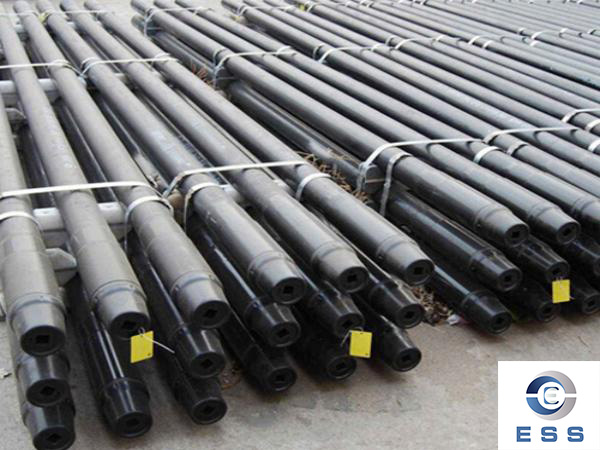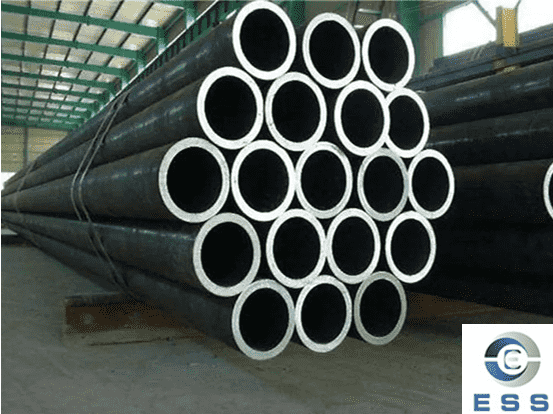
Drill pipes are key tools used in drilling and oil production operations in the oil and gas industry. They need to withstand great pressure and harsh working conditions. The pressure that a drill pipe can withstand mainly depends on its material properties, manufacturing quality, design, and technical conditions specified by standards such as API (American Petroleum Institute) or ISO (International Organization for Standardization).
The principle of drill pipe bearing tension
In drilling operations, the drill pipe is an important component connecting the drill bit and the drilling rig. As the well depth increases, the drill pipe will also extend accordingly, and tension is one of the important forces that drive the drilling rig, drill bit and drill pipe down into the well. In this process, the top drill pipe bears the greatest tension. Therefore, the drill pipe's ability to withstand tension is one of the important factors to ensure the smooth progress of drilling operations.
Factors affecting the drill pipe's tension bearing capacity
1. The material and manufacturing process of the drill pipe: The material and manufacturing process of drill pipe are the key factors that determine its strength and hardness. High-quality drill pipes have a higher tension bearing capacity, which can ensure the safety and efficiency of drilling operations.
2. Drill pipe length: The increase in drill pipe length will increase the tension on the top drill pipe. Therefore, it is necessary to consider lengthening or shortening the length of the drill pipe at different stages of drilling.
3. Drilling operation environment: Different geological structures, different well depths, and different drilling speeds will have different effects on the tension of the drill pipe. Therefore, it is necessary to design and select the drill pipe according to different situations in specific operations.
4. Ambient temperature: Temperature will also affect the tensile bearing capacity of the drill pipe. High temperature will cause the drill pipe to deform and become brittle, thereby affecting the strength and bearing capacity of the drill pipe.
Tensile bearing capacity and usage restrictions of different types of drill pipes
1. Ordinary drill pipe
Ordinary drill pipe is the most widely used drill pipe in drilling operations. Ordinary drill pipe has the advantages of being economical and easy to process, but its tensile bearing capacity is relatively low, and it can generally only withstand tens of tons of tension. When selecting ordinary drill pipe operations, you need to pay attention to its length, diameter, wall thickness and other parameters to ensure that it meets actual needs.
2. High-strength drill pipe
High-strength drill pipe has excellent tensile bearing capacity and can withstand tensile forces of tens to hundreds of tons. Due to its special material and high processing difficulty, the price is relatively high. High-strength drill pipe needs to pay special attention to its use restrictions during operation, such as not being used in wells with excessive bending, otherwise it is easy to cause the drill pipe to bend or break.
3. Threaded drill pipe
Threaded drill pipe is a threaded drill pipe with advantages such as easy disassembly and assembly and long service life, but its tensile bearing capacity is relatively low and can only withstand tens to tens of tons of tensile force. When using threaded drill pipe, special attention should be paid to the tightness of its threaded connection to ensure that it will not loosen during operation.
Method for judging the tensile bearing capacity of drill pipe
The tensile force borne by the drill pipe should be less than 90% of its material strength. The material strength of the drill pipe can be measured by testing. The drill pipe should be fully inspected before drilling operations to ensure its reliability.
Summary
The tensile bearing capacity of the drill pipe is an important factor affecting the safety and efficiency of drilling operations. The material, manufacturing process, length, ambient temperature and other factors of the drill pipe will affect its bearing capacity. Therefore, before drilling operations, it is necessary to fully consider these factors to select the appropriate drill pipe to ensure the smooth progress of the drilling operation.













 Eastern Steel Manufacturing Co.,Ltd not only improve product production and sales services, but also provide additional value-added services. As long as you need, we can complete your specific needs together.
Eastern Steel Manufacturing Co.,Ltd not only improve product production and sales services, but also provide additional value-added services. As long as you need, we can complete your specific needs together.










